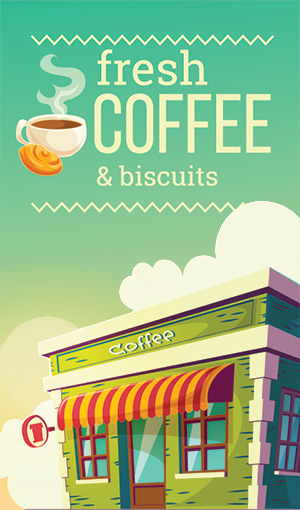These manufacturers are essential to creating a selection of ceramic goods, from wholesale piggy financial institutions to ceramic Halloween figurines, providing to diverse market needs. The mass production of items like wholesale ceramic vases and bottles guarantees that services can satisfy the high needs of holiday seasons with items such as ceramic Christmas ornaments and Easter designs.
Ceramic suppliers play an essential duty in giving discount rate wholesale cylinder sets and custom-made ceramic planter collections, which are popular amongst both sellers and customers. These suppliers likewise use ceramic oil heaters wholesale and ceramic candle vessels wholesale, which are important for home decor and aromatherapy markets. The ability to customize items like ceramic porcelain figurines and planters permits organizations to deal with certain consumer preferences and seasonal trends, improving their market appeal.
This distinction is essential for customers and distributors, as it affects acquiring choices and stock monitoring. The argument in between porcelain vs. ceramic cups centers on durability and visual preferences, with porcelain being much more refined and ceramic using a rustic charm.
The globe of ceramics incorporates different types, consisting of ceramic, terracotta, and porcelain. Each kind has special residential properties and uses, such as terracotta’s porous nature making it excellent for plant pots, while porcelain’s smooth surface fits fine dining ware. Understanding these differences is essential for wholesalers and stores who deal in products like wholesale ceramic trays, plates, and tea sets. Porcelain vs. ceramic plates differ in terms of longevity and appearance, which impacts their suitability for different dining settings.
The advantages of ceramic planters over various other materials include their breathability and aesthetic appeal, which are essential variables for indoor plants like different types of hands. The porous nature of porcelains aids stop root rot, making them a superb selection for indoor gardening. The customizability of ceramic items, from candle holders to pen owners, includes a distinct touch to home and office decoration.
Wholesale markets for porcelains are large, incorporating everything from ceramic coasters to dinner plates. Suppliers must stay on top of fads and customer needs, such as the expanding popularity of ceramic Christmas villages and Halloween decorations. These seasonal things commonly require complex styles and timely manufacturing schedules to fulfill holiday demands. Additionally, the wholesale ceramic dinnerware market, consisting of plates, bowls, and teapots, remains robust as a result of the classic allure of ceramic products in both home and restaurant settings.
In the world of ceramics, there is a substantial difference in between pottery and ceramics, primarily in terms of the manufacturing process and materials used. Pottery generally refers to items made from clay and terminated at reduced temperatures, leading to a more rustic finish, while ceramics can consist of a selection of materials and greater firing temperature levels for an extra sleek look. This distinction is essential for both customers and makers when picking products for certain usages.
Comprehending the kinds of porcelains and their applications assists services deal with details markets, whether it’s ceramic candle owners wholesale or custom ceramic coasters. The versatility of porcelains makes them ideal for a wide range of items, from ornamental things to useful kitchenware. This flexibility is additionally apparent in the ability to paint and customize ceramic vases, adding an individual touch to home design.
The wholesale ceramic market additionally consists of particular niche markets like ceramic Christmas designs, which call for detailed designs and high-grade finishes. These items, along with ceramic Easter designs and custom-made porcelain figurines, highlight the creative thinking and workmanship associated with ceramic manufacturing. The capability to produce custom-made published ceramic plates and various other individualized items additionally showcases the versatility of ceramic products to meet diverse consumer requirements.
When comparing cups and mugs, the difference lies generally in dimension and feature. A cup is commonly larger and has a deal with, making it ideal for warm beverages like coffee and tea, while a mug is smaller and may not constantly have a manage. This difference is crucial for consumers and vendors, as it influences buying choices and inventory monitoring. In a similar way, the argument in between porcelain vs. ceramic cups fixate durability and visual choices, with porcelain being much more refined and ceramic supplying a rustic beauty.
The world of porcelains includes different kinds, consisting of pottery, terracotta, and porcelain. Each kind has distinct residential properties and uses, such as terracotta’s permeable nature making it excellent for plant pots, while porcelain’s smooth coating suits great dining ware. Comprehending these distinctions is important for dealers and merchants who handle items like wholesale ceramic trays, plates, and tea sets. Porcelain vs. ceramic plates differ in terms of resilience and look, which influences their suitability for various dining setups.
The benefits of ceramic planters over other products include their breathability and visual appeal, which are vital elements for indoor plants like different sorts of palms. The porous nature of porcelains helps protect against origin rot, making them an excellent selection for indoor horticulture. The customizability of ceramic items, from candle holders to pen owners, adds a distinct touch to home and office design.
Wholesale markets for porcelains are vast, including whatever from ceramic coasters to supper plates. Furthermore, mug or cup , consisting of plates, bowls, and teapots, continues to be durable due to the timeless appeal of ceramic products in both home and dining establishment setups.
In the world of ceramics, there is a significant difference in between pottery and ceramics, primarily in regards to the production process and materials utilized. Ceramic generally describes items made from clay and fired at lower temperature levels, causing a more rustic finish, while ceramics can include a selection of materials and higher firing temperature levels for a more refined look. This distinction is very important for both customers and suppliers when selecting items for certain usages.
Comprehending the sorts of ceramics and their applications aids businesses accommodate certain markets, whether it’s ceramic candle owners wholesale or customized ceramic rollercoasters. The versatility of porcelains makes them appropriate for a variety of items, from ornamental things to useful cookware. This convenience is also noticeable in the capability to paint and customize ceramic vases, including a personal touch to home décor.
The wholesale ceramic industry likewise includes specific niche markets like ceramic Christmas decors, which require elaborate styles and top quality surfaces. These items, along with ceramic Easter decorations and personalized figurines, highlight the creative thinking and workmanship involved in ceramic manufacturing. The ability to create customized published ceramic plates and other personalized items better showcases the adaptability of ceramic products to satisfy varied consumer needs.
On the whole, the ceramic industry is a vibrant and complex field, with suppliers and providers consistently introducing to fulfill market needs. From wholesale ceramic bottles to decorative teapots, the series of products offered highlights the enduring appeal and adaptability of ceramics. Recognizing the distinctions in between various ceramic products and their applications allows organizations to make educated choices and supply high-grade items that satisfy the demands of their clients.

The Versatility of Ceramic Pen Holders

Recent News
-
客製化禮品的獨特市場定位
5 July 2025
-
行業專家的滅蚤建議
5 July 2025
-
比基尼除毛中最常見的問題與答案
5 July 2025
Riverside City Hall
8353 Sierra Avenue • Riverside, CA 87 535
Phone: (907) 350-7400 • Monday – Thursday, 8:00 am – 6:00 pm
Recent News
Quick Links
A vibrant city nestled against the Mountains.
Copyright © 2023 - fansnextdoor.com All Right Reserved.